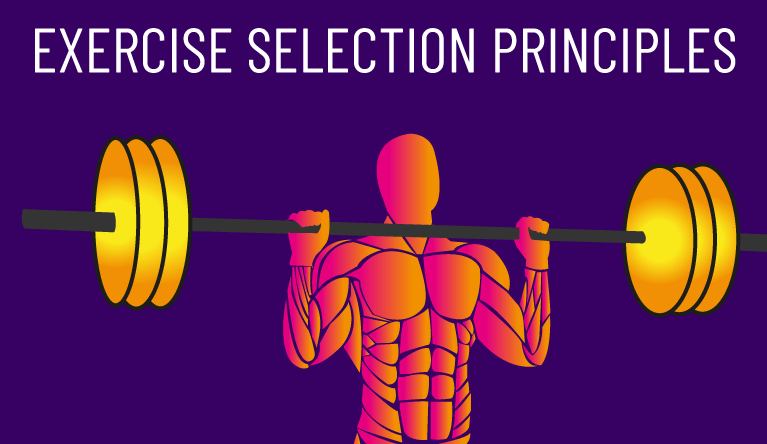
What determines whether a muscle or muscle region is recruited during an exercise?
Neuromechanical matching may be the primary answer.
That is, the nervous system recruits muscle or muscle regions that have the greatest leverage for that exercise. Think of leverage as how easily a muscle or muscle region can produce force for a given exercise.
Now, chances are you’re human, and humans have many similarities.
In many situations, the leverage a specific muscle or muscle region has for an exercise is going to be similar among numerous individuals.
For example, the middle deltoid has the greatest leverage for shoulder abduction versus other muscles, a finding consistent among numerous studies.
So a shoulder abduction exercise, like lateral raises, is going to preferentially grow the middle deltoid in virtually all individuals.
Yet in other cases, individual differences certainly exist in the leverage a muscle or muscle region has for an exercise.
In this article, we’ll explore the evidence for this, what this means for your training, and we’ll wrap up trying to answer whether an individual can change what muscle region they predominantly recruit during an exercise.
Let’s dive in.
Table of Contents
Part I: Not Everyone Recruits the Same Muscles
A 2021 study out of France had trained subjects perform nordic curls and stiff-legged deadlifts, while activation of three hamstring muscles (semitendinosus, semimembranosus, and biceps femoris) was recorded via surface electromyography.
For both exercises, hamstring activation was not identical between individuals.
For example, with the nordic curl, quite a few individuals saw the highest activation in the biceps femoris, but for others, it was the semitendinosus or semimembranosus.

Likewise, for the stiff-legged deadlift, some recruited the semimembranosus the most, others the biceps femoris.
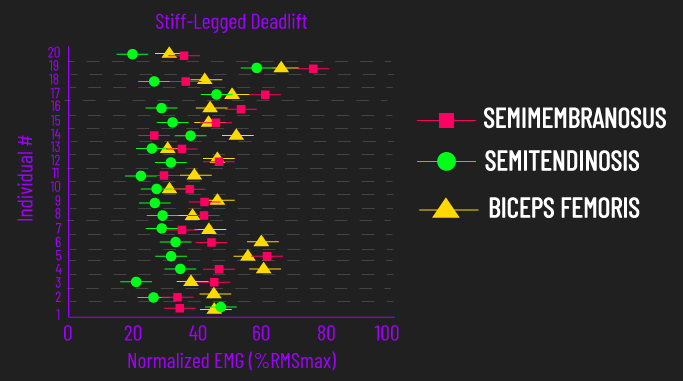
Another 2020 study out of Poland found during a barbell bench press, the activation of the chest, triceps and anterior deltoid differed between individuals.
Some tended to activate the chest the most, others the triceps the most, and even others the anterior deltoid the most.
Other research also finds during tasks such as walking and cycling, muscle activation patterns differ between individuals.
Now, all these research papers used surface electromyography (abbreviated to EMG), which has limitations.
It does not precisely measure muscle activation, rather it estimates the strength of the nerve signals to muscle fibers, a few steps before actual muscle activation. Moreover, many technical points exist where surface electromyography research can go wrong.
Even so, I still believe the mentioned studies are still useful. For one, the French study had excellent reliability, as they retested the measures on another session with similar recordings attained.
Secondly, the Polish study did involve electromyography recordings from maximal isometric bench press contractions (with the elbow at 90 degrees), something that might be better for increasing the validity of the recordings.
So all in all, I believe we have promising data indicating in certain situations, not everyone experiences the same muscle recruitment patterns during an exercise.
Part II: What This Means
This means just because one individual says their muscles grew a certain way with one or a selection of exercises, it does not necessarily mean you’ll experience the same thing.
Over the long-term, you’re going to want to try and figure out what selection of exercises work best for your body and goals. This is why tracking your training and running your own small experiments can be of great benefit.
Besides, not everyone’s anatomy and preference are the same either.
Certain exercises may suit someone’s anatomy and/or preferences more than someone else, and this may indeed matter for long-term muscle growth.
For example, a 2017 study out of the USA recruited 17 men with an average of 5.6 years of training experience.
Subjects were assigned to a fixed or autoregulated group.
The fixed group was given this program to train weekly (shown below).
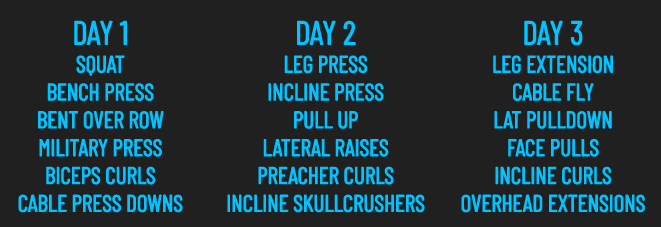
The autoregulated group was free to select what exercises they wanted to train per muscle group each session from a wide list.
All other training variables were the same between groups.
By the end of the 9-week study duration, lean body mass gains were greater for the autoregulated group.
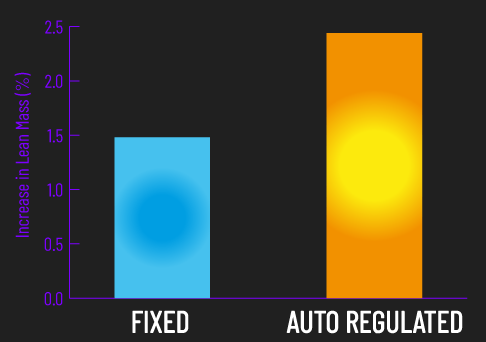
Presumably, at least some of this result is due to trained individuals having a good understanding of what exercises work best for them, leading to better muscle adaptations.
Before moving on, if you’re curious about creating an effective training program for muscle hypertrophy, our high quality partner Alpha Progression can help. It can generate a highly effective program for you, track your workouts live with in-built progression recommendations, provide graphs displaying your long term progress, and it has a massive exercise database with more than 550 exercises.
Click HERE (the link opens in a new tab) to get a free 2 week trial of the apps features. If you like it and go beyond, the link also gives you 20% off a subscription!
We never promote trash at the House of Hypertrophy, so rest assured the app is high quality. The reviews speak to this, 4.8 starts (based on more than 7,000 reviews) on Google play, and 4.9 stars in Apple’s store (based on nearly 400 ratings).
Part III: Beware of Exercise Technique
During compound exercises that recruit multiple muscle groups, logical evidence suggests your technique biases towards recruiting your stronger muscle or muscle groups.
For example, this 2009 study out of the USA established people with greater back strength relative to knee strength, used their back more during a lifting task, while people with greater knee strength relative to back strength used a more knee-dominant strategy.
This could work against your goals.
Say you want to barbell bench press to highly develop your chest.
Yet, perhaps you use a deltoid dominant technique unknowingly.
You may lower the bar as usual, but you press up and then back, resulting in a large part of the lifting phase being far from the line of your shoulders, something that likely recruits the anterior deltoid more.
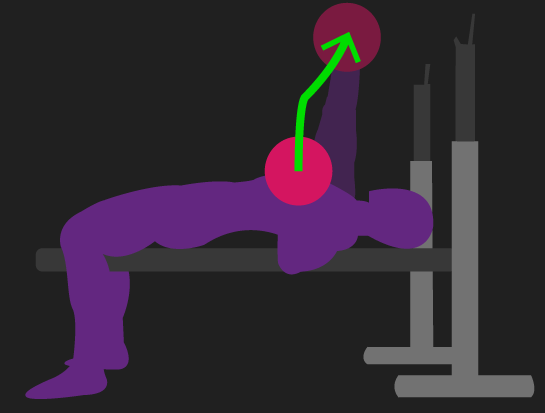
A better way would be to lower as usual, and then instantly press backward to reduce the distance between the bar and the shoulder line, and then upwards when necessary. This technique is likely more favorable for chest development, and in fact, elite bench pressers tend to use this bar path.
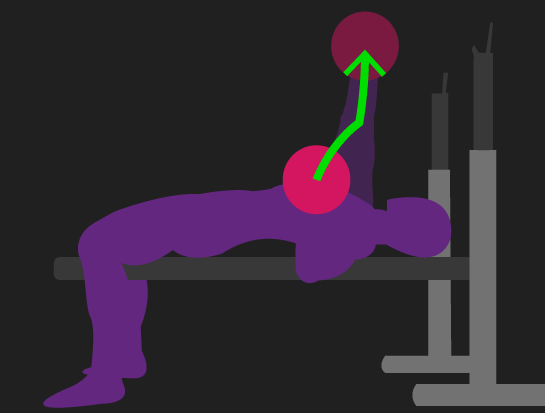
Now, this precise bar path is executed easier during hard repetitions, where the bar is moving slowly because you’re nearing failure or you’re using heavy weights. With easier repetitions, simply aiming to press backward straight off the chest will suffice.
The takeaway here is it’s good to be aware of the technique you’re using during a compound exercise, is it conducive to your goals. This is one reason why recording yourself performing an exercise can be useful.
Part IV: Changing Exercise Recruitment?
We’ve just mentioned how you want to be aware of your technique during compound exercises, as this can influence which muscle groups you preferentially recruit.
But, away from technique, is there any way to change which muscle groups get preferentially recruited?
Some new research suggests there might be. Specifically, performing additional isolated training for a muscle group may subsequently increase its activation during a compound exercise.
We previously noted a study from Poland indicating recruitment of the chest, triceps, and anterior deltoids differ between individuals on the bench press.
But the researchers did something interesting
They split subjects into one of three groups: those with the lowest chest EMG recordings during the bench press (the chest group), those with the lowest anterior deltoid EMG recordings (the anterior deltoid group), and those with the lowest triceps EMG recordings (the triceps group).
The subjects went on to perform targeted isolation training for their respective lowest EMG muscle, performing 3 exercises per session, each for 4 sets of 10-15 repetitions to failure, 3x per week for 6 weeks.
These were the exercises used for each group per session.
All three groups also performed 3 sets with a 4 rep-max load on the barbell bench press each week to ensure strength did not attenuate.
After the 6-week training period, recruitment of the chest, anterior deltoid, and triceps were re-measured, and all three groups increased the recruitment of the muscle they trained.
The anterior deltoid group recruited the anterior deltoid more, with slightly non-significant decreases in triceps and chest involvement.
The chest group recruited the chest more, with a sharp decrease in triceps involvement, but little anterior deltoid recruitment change.
The triceps group recruited the triceps more, with a decrease in chest and anterior deltoid involvement.
Another study out of the USA recorded gluteus maximus involvement during bilateral and unilateral squats before and after a week of glute band training.
Glute involvement during the bilateral and unilateral squats was increased after the week of glute band training.
Thus, this literature suggests performing isolated training for a muscle group, and reducing or ceasing training for the other muscle groups, may lead to the trained muscle group increasing its involvement in a compound exercise.
More research is still needed to establish the true effectiveness of this method, but if you would really like to change what muscle group you preferentially recruit during a compound exercise, you may wish to experiment with this concept.
Perhaps you like the back squat, but you’d like it to recruit the glutes more than usual, performing some added isolation training for the glutes for a while (while minimizing work for the other muscles) may accomplish this.
Similarly, if you like the deadlift, but you’d like it to recruit the glutes or hamstrings more than the spinal erectors, performing glute or hamstring isolated training for a while (while minimizing spinal erector training), may accomplish this.
Part V: Summary
In summary, individuals do not always recruit the same muscle or muscle regions during an exercise.
So over the long term, you’re going to want to figure out what selection of exercises works best for you. Anatomy and preferences also play a role here.
With compound exercises, you should be mindful of whether your technique is executed in a way that predominantly recruits the muscle group you want to maximally train.
Finally, it’s possible performing added isolated training for a muscle group for a while will increase that muscle activation during a compound exercise. This could be useful if you wish to change what muscles you preferentially recruit during a compound exercise.
Remember to feel free to check out the Alpha Progression App if you’re interested. Also feel free to check our free bench press e-book below.

